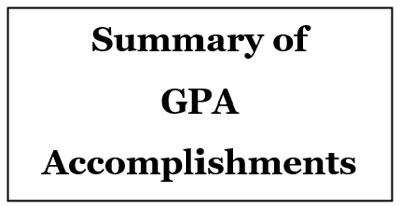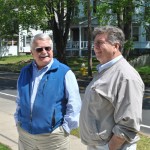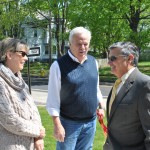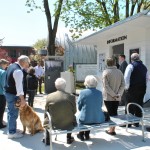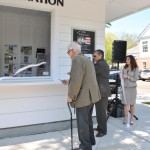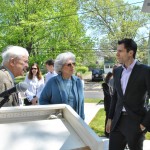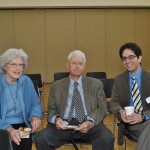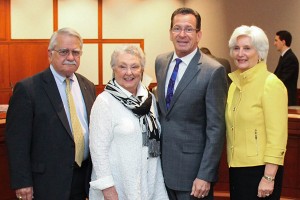A gallery of photos from the grand opening of the Guilford Information Kiosk. To view enlarged images, double-click on the first image, then use right arrows to proceed through the gallery. To return to the page, click the X in the top right corner.
- Boynton Schmitt
- Selectman Carl Balestracci, Jr., Town Engineer Jim Portley
- Carl Balestracci, Jr., Jim Portley, State Senator Ed Meyer, First Selectman Joe Mazza
- Russ Campaigne (architect of kiosk), Frank DePino of mediaBOOM
- State Representative Sean Scanlon and board member Tracy Tomaselli
- State Senator Ted Kennedy Jr., Boynton Schmitt, Jean Richards, Board President Shirley Girioni
- Board President Shirley Girioni speaking
- Ted Kennedy, Jr., Sean Scanlon, Joe Mazza
- Boynton Schmitt cuts the ribbon
- Mary Jo Kestner, Frank DePino, Russ Campaigne,
- Boynton Schmitt, Jean Richards, Frank DePino
- Boynton Schmitt
- Frank DePino, Sean Scanlon, Shirley Girioni, Joe Mazza, Boynton Schmitt, Ted Kennedy, Jr.
- Joe Mazza, Boynton Schmitt, Ted Kennedy, Jr.
- Sean Scanlon, Shirley Girioni, Joe Mazza
- Mary Jo Kestner, Sandy Ruoff (Director of Guilford Free Library), Russ Campaigne
- Boynton Schmitt, Jean Richards
- Learning about the website
- Ted Kennedy, Jr., then GPA Board members (Heidi Samuelson, Kristen Popolizio, Veronica Soell, Shirley Girioni, Tracy Tomiselli), Sean Scanlon, Joe Mazza
- Ted Kennedy, Jr., Veronica Soell, Heidi Samuelson
- Carol Newton, Brian McGlone, Hunt Newton from AT&T
- Jean Richards, Boynton Schmitt, Scott Wands (CT Humanities Council)

